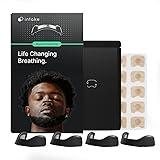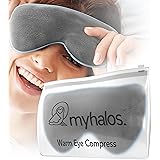Unlock Deeper Sleep and Relaxation with Bedtime Yoga Stretches
Globally, it is estimated that approximately one-third of adults experience occasional insomnia, with many others struggling with stress that interferes with restful sleep. The pursuit of tranquility at the end of a long day is a shared human experience, often made challenging by the demands of modern life. Fortunately, a calming bedtime routine can be established, and the video above provides an excellent foundation for achieving this. Focusing on gentle movements and mindful breathing, these relaxing bedtime yoga stretches are specifically designed to prepare both body and mind for a restorative night’s rest.
Unlike more vigorous forms of exercise, this unique sequence can be performed right in your bed, eliminating the need for special equipment or even leaving your cozy sleeping space. Pillows, which are already part of your sleep sanctuary, are incorporated as supportive props, making this practice incredibly accessible for all levels. Through a series of soothing postures, tension is gently released from common problem areas, contributing to a sense of profound peace. The importance of integrating such practices into an evening ritual cannot be overstated, as the physiological benefits extend far beyond mere physical flexibility.
Embracing Gentle Movements for Evening Relaxation
The beauty of a bedtime yoga routine lies in its non-demanding nature. While some yoga practices are geared towards building strength and stamina, this specific sequence is crafted to induce calm and encourage letting go. The focus is placed on long, deliberate exhales, which are known to activate the parasympathetic nervous system—our body’s “rest and digest” mode. This deliberate slowing of the breath signals to the brain that it is safe to relax, contrasting sharply with the often-frenetic pace of daily life.
Such gentle engagement allows for an intuitive connection with one’s body, where movement is guided by comfort rather than exertion. It is a time for introspection, permitting the release of mental and physical accumulations from the day. Instead of pushing into challenging poses, the emphasis is placed on softening and surrendering to gravity. This passive approach can be particularly beneficial for those who feel overstimulated or carry a significant amount of stress, providing a comforting transition into sleep.
Releasing Neck and Jaw Tension: A Gateway to Calm
Tension in the neck and jaw is often accumulated throughout the day, frequently exacerbated by stress, poor posture, and prolonged screen time. This can manifest as headaches, stiffness, and even difficulty sleeping. The initial stretches in this relaxing yoga sequence are strategically introduced to address these critical areas, providing immediate relief that is felt throughout the upper body. Gentle head rolls and ear-to-shoulder movements are performed, inviting a subtle yet significant release.
Furthermore, attention is drawn to the facial muscles and jaw, which are frequently held in a state of unconscious clenching. By consciously softening these areas, a profound sense of ease can be initiated, cascading down the entire body. It is often observed that one side of the neck may feel tighter than the other; however, the practice encourages an exploration of these differences without judgment. This thoughtful approach ensures that the stretching is personalized and deeply effective, preparing the foundation for deeper relaxation.
Unwinding Shoulders and Upper Back with Eagle Arms
Following the neck and jaw release, the focus gracefully shifts to the shoulders and upper back, regions where considerable strain is commonly held. The Eagle Arms (Garuda Arms) pose is skillfully employed to create space and mobility in these areas. This posture, which involves wrapping the arms around each other, is known for its ability to stretch the muscles between the shoulder blades and around the rotator cuffs. The elbows are elevated, and hands are moved away from the face, intensifying the stretch in a controlled manner.
While the sensation might be intense for some, the instruction always prioritizes comfort, suggesting modifications like simply reaching for the shoulders if a full bind is not accessible. This movement, sometimes compared to a deep, satisfying stretch after prolonged stillness, is particularly beneficial for counteracting the effects of rounded shoulders from desk work or driving. The gentle pressure created by the forearms pressing towards each other further encourages a widening across the upper back, facilitating the release of deeply ingrained tension and promoting better posture.
Cultivating Side Body Length and Hamstring Flexibility
The transition to poses like Parivrtta Janu Sirsasana, which combines a forward fold with a side bend, allows for a comprehensive opening of the torso and legs. Extending one leg out to the side while keeping the other bent, the body is invited into a gentle side stretch. This movement, often likened to stretching out a crumpled piece of paper, helps to lengthen the intercostal muscles between the ribs, which can enhance breathing capacity and relieve tightness in the lateral aspects of the spine. The head is allowed to be heavy, ensuring the neck remains relaxed.
Subsequently, the posture evolves into a forward fold towards the extended leg, targeting the hamstrings and lower back. Practicing on a mattress naturally supports the knees, allowing for a more comfortable and accessible stretch, particularly for those with tight hamstrings. Instead of striving for a deep, challenging fold, the emphasis is placed on allowing the body to naturally round and decompress. Forward folds are especially valued at the end of the day, as they are believed to soothe the nervous system and promote a profound sense of internal quietude, similar to the calm achieved by retreating inward.
Spinal Twists: Releasing and Renewing
To further facilitate release and promote spinal health, seated twists such as Matsyendrasana are incorporated into the sequence. After the forward folds, a gentle twist provides a welcome counter-movement, assisting in the decompression of the spine. One knee is bent, and the foot is crossed over the thigh, with the opposing arm wrapping around for leverage. The body is then gently rotated, encouraging a release of tension that might have accumulated in the back and sides.
These twists, often considered a reset button for the spine, are designed to enhance flexibility and promote better circulation within the spinal column. While the video suggests a specific form, it is always emphasized that comfort is paramount; modifications can be made, such as keeping the bottom leg extended if crossing it over feels too intense. The gentle spiraling action of the spine can feel incredibly therapeutic, aiding in the release of residual stress and preparing the body for the stillness of sleep.
Targeting Hips and Quads for Deeper Relaxation
The sequence progresses to address the hips and quadriceps, areas that can become particularly tight from prolonged sitting or daily activities. A specific variation, often described as a modified seated twist or half hero’s pose, focuses on bringing the top of one foot flush against the bed while maintaining alignment with the hips. This targets the quadriceps and hip flexors, which, when tight, are often implicated in lower back discomfort and restricted movement.
It is entirely normal for one side of the body to exhibit greater tightness than the other, and this awareness is welcomed without judgment. Instead of pushing to achieve a “perfect” alignment, the practitioner is encouraged to simply breathe into the sensation and allow for a gradual release. This focused stretching in the hips and quads contributes significantly to overall body ease, further preparing the body for the deep rest that is sought from these bedtime stretches. The gentle stretch here helps to metaphorically untie the day’s knots from the lower body.
The Power of Breath and Savasana: Preparing for True Rest
Throughout the entire sequence, the breath serves as an anchor, a constant guide back to the present moment. Slow, steady breaths, inhaled and exhaled through the nose, are meticulously maintained, influencing the nervous system and promoting a state of calm. This conscious breathing practice is arguably as important as the physical postures themselves in fostering true relaxation. It teaches the body to downregulate, moving away from the “fight or flight” response and towards a state of peace.
The culmination of this relaxing bedtime yoga practice is a brief Savasana, or corpse pose, which acts as a gentle transition into deeper rest. Lying flat on the back, the body is given permission to completely surrender, integrating the benefits of the preceding stretches. This short period of stillness is presented as an opportunity to set the intention for sleep, allowing the pronouncements “I am calm. I am relaxed. I am at peace.” to resonate deeply. The video intentionally keeps this Savasana brief to avoid falling asleep during the recording, but it is explicitly encouraged to then transition into your “true Savasana” under the covers, allowing the peaceful energy cultivated to guide you into a wonderful night’s rest.








